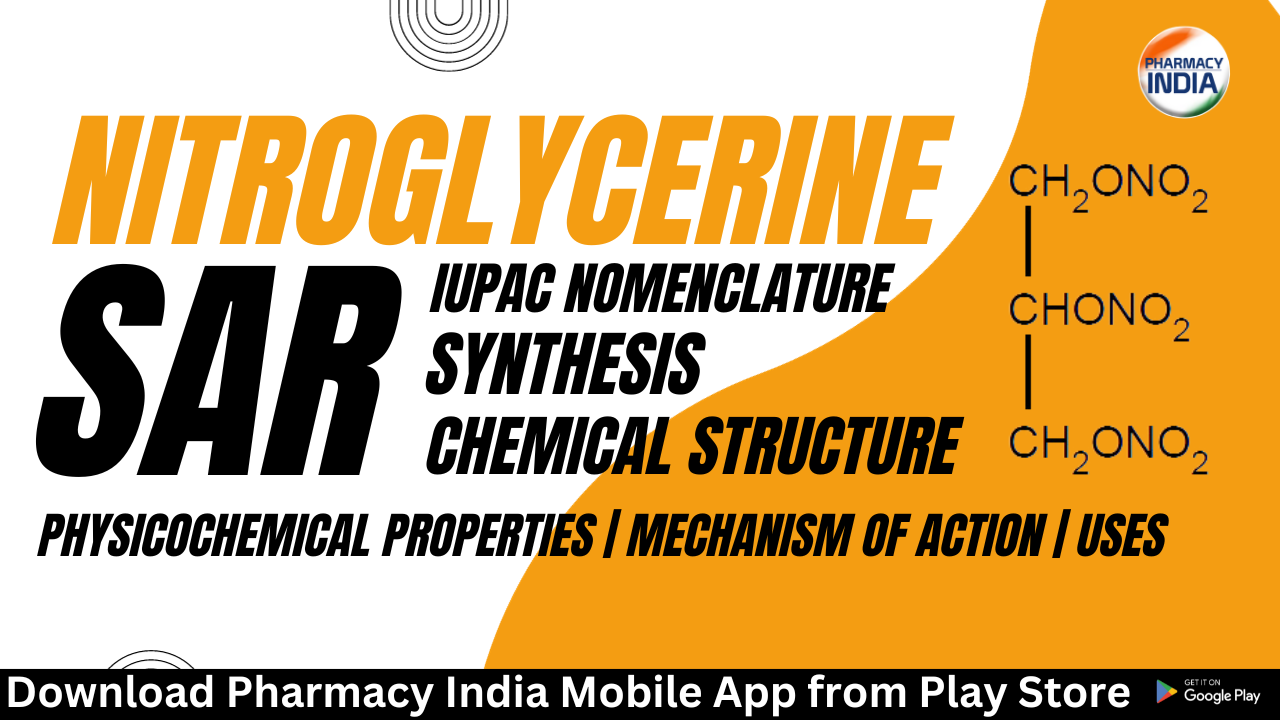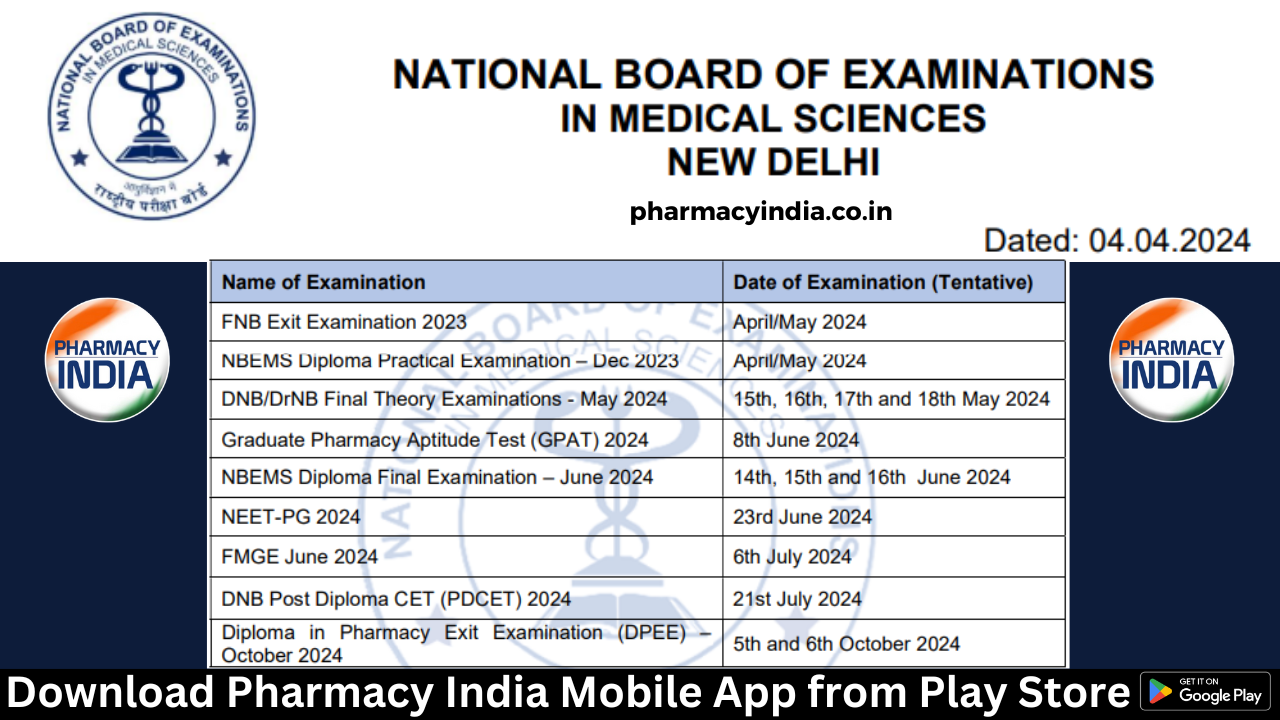Nitroglycerine IUPAC Nomenclature, SAR, Physicochemiscal properties, Synthesis, Mechanism of Action and Uses. In our detailed exploration, delve into the synthesis of Nitroglycerin and unlock the secrets behind its Structure-Activity Relationships (SAR). Grasp the significance of its three nitrate groups (–ONO2), pivotal for its vasodilatory activity, and understand how its aliphatic chain influences potency and duration of action. Marvel at the ester functionality, a key player in Nitroglycerin’s biological activity.
Nitroglycerin, also known as glyceryl trinitrate. It is a powerful and highly explosive compound that has been used for various medical and industrial purposes. Nitroglycerin was discovered in 1847 by the Italian chemist Ascanio Sobrero. Its invention revolutionized construction, mining, and demolition industries, although its use posed significant safety challenges, leading to the development of safer forms of explosives like dynamite by Alfred Nobel.
IUPAC nomenclature
1,3-dinitrooxypropan-2-yl nitrate; [3-(nitrooxy)-2-[(nitrooxy)methyl]propyl] nitrate; 1,2,3-trinitroxypropane
Chemical Structure

Physicochemical Properties
1. Molecular formula: C3H5N3O9
2. Molecular Weight: 227.09 g/mol
3. Physical State: Nitroglycerin is a colorless, oily, and odorless liquid at room temperature. It is sensitive to shock, heat, and friction and can easily explode.
4. Melting Point: Nitroglycerin freezes at 13.2°C (55.8°F).
5. Boiling Point: Nitroglycerin does not have a specific boiling point because it undergoes decomposition before boiling. It starts to decompose at temperatures above 50°C (122°F).
6. Density: The density of nitroglycerin is approximately 1.6 g/cm³.
7. Solubility: Nitroglycerin is soluble in organic solvents such as ethanol, acetone, and diethyl ether but is practically insoluble in water.
8. Chemical Stability: Nitroglycerin is chemically unstable and tends to decompose over time, especially in the presence of light, heat, or impurities. The decomposition products can include nitrogen oxides and oxygen, which are gases.
Synthesis

SAR of Nitroglycerine
1. Nitrate Groups (–ONO2): Nitroglycerin contains three nitrate groups. The presence of nitrate groups is crucial for the vasodilatory activity. These groups are believed to be metabolized in the body to release nitric oxide (NO), a potent vasodilator. The ability to release NO is a fundamental aspect of the SAR for nitroglycerin-like compounds.
2. Aliphatic Chain: Nitroglycerin has an aliphatic chain (glyceryl group) connecting the nitrate groups. The length and nature of this chain can influence the compound’s potency and duration of action. Generally, longer alkyl chains can enhance stability and prolong the duration of action.
3. Ester Functionality: Nitroglycerin is an ester of nitric acid. The ester functional group is necessary for the compound’s biological activity. Other esters with similar structures may also exhibit vasodilatory effects, although the presence of the nitrate group is essential.
Mechanism of action
They are rapidly denitrated enzymatically in the smooth cells to release the reactive free radical nitric oxide (NO), which activates cytostolic guanyl cyclase and increases the cyclic guanosine mono phosphate (cGMP) that causes dephosphorylation of myosin light chain kinase (MLCK) through cGMP dependent protein kinase. The reduction in phosphorylated MLCK interferes with myosin and fails to cause contraction. Relaxation also occurs due to reduced Ca2+ entry.
Uses
1. Angina Pectoris
2. Acute heart failure
3. Inducing intra-operative hypotension
4. Peri-operative Hypertension
Acetazolamide: SAR, Synthesis, Mechanism, and Uses
6-Mercaptopurine – SAR, Physicochemical Properties, Synthesis, IUPAC Nomenclature, Mechanism of action and Uses
Methotrexate: SAR, Synthesis, Mechanism, and Uses
Triprolidine SAR, Physicochemical Properties, Synthesis, IUPAC Nomenclature, Mechanism of action and Uses
Promethazine HCl SAR, Physicochemical Properties, IUPAC Nomenclature, Mechanism of action and Uses
Cimetidine SAR, Physicochemical Properties, IUPAC Nomenclature, Mechanism of action and Uses
Download B. Pharma 1st Semester Model Papers
B. Pharma 4th Semester Model Papers
Subscribe our PHARMACY INDIA Youtube Channel for more Pharma Updates
Click here to follow us on Instagram
Click here to Join our Telegram Channel
Download PHARMACY INDIA MOBILE APP from Google Play Store






